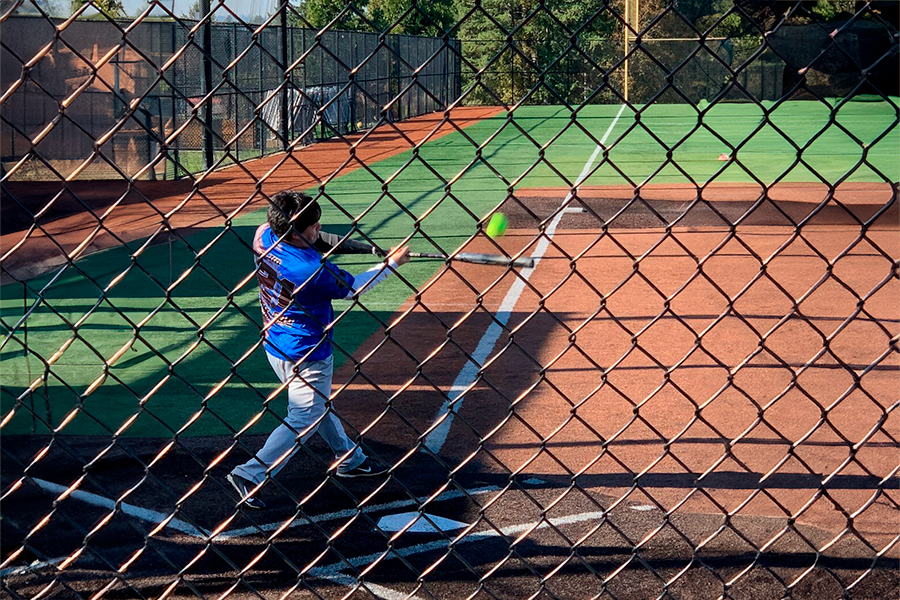Our Portland, OR, patient Darren Jio was born with an arteriovenous malformation in his hand. As described by the National Institutes of Health, “Arteriovenous malformations (AVMs) are abnormal, snarled tangles of blood vessels that cause multiple irregular connections between your arteries and veins.” In Darren’s case, this issue caused him both pain and limited movement of his hand. He dealt with these challenges throughout his childhood and into adulthood, along with enduring eight surgeries in an attempt to improve his hand function. Finally, Darren began to explore the possibility of having an elective amputation. He had a partial hand amputation before coming to our patient care center to learn more about his prosthetic options. That was two years prior to deciding to go through with the surgery to remove his entire left hand. Darren’s prosthetist, Mac Lang at our Northwest Center, connected with his surgeon to collaborate on making sure that Darren’s residual limb would be the optimal length to maximize his prosthetic function.
His decision was based on wanting a better quality of life. “My hand was just not functional. I couldn’t grab anything with it. Honestly, I wish I had done the amputation sooner. When I did have it done, I was in and out of the hospital the same day.”
After Darren’s surgery in 2014, he had no pain and was more functional than he had been, even before he was fit with his prosthesis. Within two months after his amputation, he was back in our center to receive his prosthetic device. The first device he was fit with was a bebionic hand. “The process was extremely smooth. That’s what I thought. I’ve worked in healthcare my entire life, and this experience with a healthcare company was great. My clinical team worked hard to get my prosthesis how I needed it to be, how I wanted it to be.”
One thing Darren appreciated during his fitting appointment was the time he spent with his clinical therapy specialist. “I learned how to tie my shoes, zip up zippers, how to button a shirt. They were helping me go through simple everyday tasks — helping me figure out how to do those things. It wasn’t just: here’s your prosthesis, figure it out. Even before I received the prosthesis that I took home, they were working with me. They were offering me so much support.” You can watch Darren first using his hand in his visit snapshot video below:
Darren was initially fit with a bebionic hand and later added an ETD, which, for some tasks, was more helpful.
“There’s lots of stuff the ETD is great for — tying shoes, handyman stuff like holding a nail and being able to hammer it in. You just feel like you’re functioning a little more normally. I can grab a jar or a bottle and open it easily.”
Darren also has a body-powered device, and an activity-specific device, the Black Iron Trainer from TRS, that allows him to hold weights and gardening/yardwork tools. But even when Darren isn’t wearing a prosthesis, his life is easier than it was with a painful, non-functioning hand.
Darren is a father of three. His son was three when Darren had his amputation, and his daughters have only known him post-amputation. “Most of my kid’s friends think my prostheses are pretty cool. I get a lot of questions from kids or strangers, and that never bothers me. I’m happy to tell them about my limb difference. When I wear my bebionic, that’s when I get the most questions, just because of the robot look.”
Our center’s clinical teams see patients each year who have either had an elective amputation or are considering one. Darren’s advice for those considering it? “Weigh your options. Really talk it through and think it through. Analyze the quality of life that you have with your limb as it is currently. If I could have saved more of my hand, I might have gone with a further partial hand amputation — but the best option for me was the full hand amputation. So, really investigate your options and take a long time to think about the decision.”
If you or someone you know is considering an elective amputation and would like to learn more about prosthetic options, or if they’d like to be connected to our peer support group, please contact us. If you have had an elective amputation, please comment below. A big thank you to Darren for telling us about his experiences!






%20President%20and%20Senior%20Clinical%20Director.jpg?width=600&height=600&name=John%20M.%20Miguelez%2c%20CP%2c%20FAAOP(D)%20President%20and%20Senior%20Clinical%20Director.jpg)










No Comments Yet
Let us know what you think